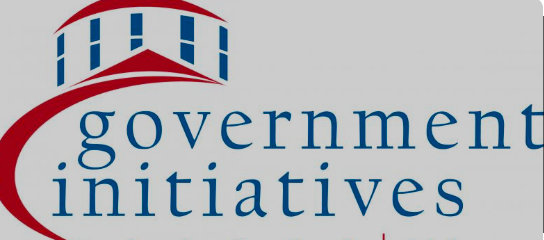
Governments play a pivotal role in shaping the socio-economic landscape of a nation, and their initiatives serve as catalysts for progress and development. This essay explores the myriad ways in which government initiatives impact various sectors, drive innovation, and address societal challenges. From economic stimulus packages to social welfare programs, governments worldwide engage in diverse initiatives to foster growth, inclusivity, and sustainability.
Economic Stimulus Programs
A. Global Financial Crises
- 2008 Financial Crisis: The response of governments worldwide, including stimulus packages and bailouts, to mitigate the impact of the global financial crisis.
- COVID-19 Pandemic: Unprecedented economic challenges posed by the pandemic led to massive stimulus programs, focusing on job retention, healthcare, and business support.
B. Innovation and Technology
- Investments in Research and Development: Governments allocate funds to spur innovation, research, and technological advancements, fostering economic competitiveness.
- Digital Transformation Initiatives: Embracing the digital age, governments invest in initiatives to promote technology adoption across sectors, from e-governance to smart city projects.
Social Welfare and Healthcare
A. Healthcare Initiatives
- Universal Healthcare Programs: Countries with universal healthcare systems prioritize initiatives to ensure access to quality healthcare services for all citizens.
- Global Health Crises Response: Government initiatives to address global health crises, emphasizing preparedness, vaccination campaigns, and international collaboration.
B. Social Welfare Programs
- Poverty Alleviation Initiatives: Governments implement programs to uplift marginalized communities, providing financial aid, education, and healthcare.
- Unemployment Benefits: In times of economic downturns, governments introduce initiatives such as unemployment benefits to support citizens facing job losses.
Environmental Sustainability
A. Climate Change Mitigation
- Renewable Energy Initiatives: Governments worldwide promote the transition to renewable energy sources, investing in solar, wind, and other sustainable technologies.
- Carbon Emission Reduction Targets: Initiatives to combat climate change include setting and achieving ambitious targets for reducing carbon emissions.
B. Conservation Efforts
- Biodiversity Protection: Governments engage in conservation initiatives to protect endangered species, preserve ecosystems, and maintain biodiversity.
- Waste Management Programs: Addressing the environmental impact of waste through recycling initiatives and sustainable waste management practices.
Education and Skill Development
A. Access to Education
- Universal Education Initiatives: Governments strive to provide access to quality education for all citizens, emphasizing inclusivity and equal opportunities.
- Digital Learning Initiatives: The integration of technology in education, with initiatives promoting e-learning and digital literacy.
B. Skill Development for Employability
- Vocational Training Programs: Initiatives to equip individuals with practical skills, enhancing employability and addressing the changing demands of the job market.
- Entrepreneurship Development Initiatives: Fostering a culture of entrepreneurship through programs that support startups, provide funding, and mentorship.
Infrastructure Development
A. Transportation
- Mass Transit Initiatives: Governments invest in mass transit systems to improve urban mobility, reduce traffic congestion, and lower carbon emissions.
- Infrastructure for Economic Growth: Development of roads, ports, and airports as a part of larger infrastructure initiatives aimed at stimulating economic growth.
B. Technology Infrastructure
- Digital Infrastructure Projects: Initiatives to build robust digital infrastructure, including high-speed internet access and the development of smart cities.
- 5G Implementation: Governments prioritize the rollout of 5G technology, unlocking new possibilities for communication, connectivity, and innovation.
Inclusive Governance
A. Citizen Engagement
- Open Government Initiatives: Governments promote transparency and citizen participation through initiatives that provide access to government data and decision-making processes.
- Community Development Programs: Localized initiatives addressing specific community needs and involving citizens in the decision-making process.
B. Gender Equality and Social Inclusion
- Gender Equality Initiatives: Governments work toward gender parity through policies, awareness campaigns, and initiatives promoting equal opportunities.
- Social Inclusion Programs: Efforts to address discrimination and promote inclusivity, recognizing and celebrating diversity in society.
International Collaboration
A. Diplomacy and Aid
- Foreign Aid Initiatives: Governments engage in international cooperation, providing aid to countries facing crises, fostering diplomatic relations, and promoting global stability.
- Humanitarian Efforts: Initiatives addressing global challenges such as refugee crises, natural disasters, and pandemics through collaborative efforts.
B. Trade and Economic Partnerships
- Bilateral and Multilateral Trade Agreements: Governments foster economic growth by engaging in trade agreements, creating mutually beneficial partnerships.
- Regional Economic Blocs: Initiatives to strengthen regional economic integration and collaboration for shared prosperity.
Challenges and Criticisms
- Implementation Hurdles: Challenges governments face in effectively implementing initiatives, including bureaucratic inefficiencies and political obstacles.
- Critiques of Policy Effectiveness: Evaluation of the impact and effectiveness of government initiatives, considering factors like unintended consequences and long-term sustainability.
Conclusion
Government initiatives form the bedrock of societal progress and development. From economic stimulus programs that navigate financial crises to social welfare initiatives promoting inclusivity, governments wield a powerful influence on the well-being of their citizens. Environmental sustainability, education, infrastructure development, and international collaboration are integral aspects of government efforts to shape a better future.
However, challenges abound, from implementation hurdles to critiques of policy effectiveness. As we navigate the complex landscape of governance, it becomes imperative to continually assess, adapt, and innovate. Government initiatives are not static; they evolve with the changing needs of society, technology, and the global landscape. In this dynamic process, governments emerge as architects of positive change, steering nations toward prosperity, equity, and sustainable development.





